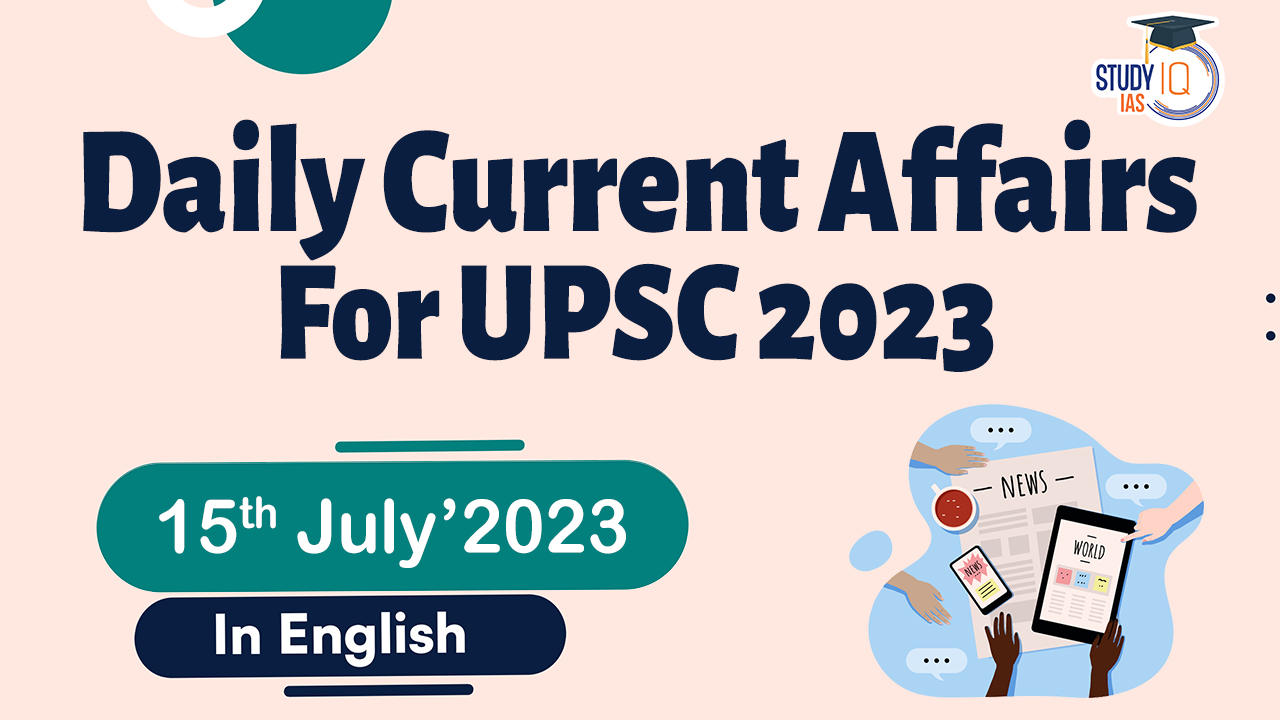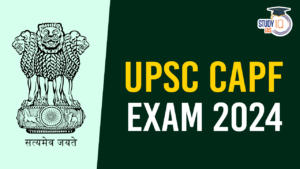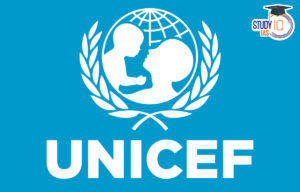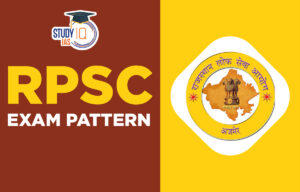Daily Current Affairs for UPSC 2023
Q) Which one of the following statements is not correct about Additional Tier-1 (AT1) Bonds?
- AT1 bonds do not have a maturity date.
- They are part of the contingent convertible bonds.
- AT1 bonds are above all other debt.
- The issuing bank can convert AT1 bonds principal value.
Daily Current Affairs for UPSC – 14 July April 2023
Explanation:
- Option (1) and (2) are correct: Additional Tier-1 (AT1) Bonds like other bonds, pay regular interest. But they as they are a permanent part of the bank’s capital.They are part of a broader do not have a maturity date, family of assets known as contingent convertible bonds, or CoCos. They are quasi-equity instruments with features to absorb losses when a bank runs into trouble. In such a situation, the Basel III capital rules allow write down or conversion of these high-return, high-risk bonds into equity to save the bank and keep it afloat as a going concern.
- Option (3) is incorrect: AT1 bonds are subordinate to all other debt and only senior to common equity. These bonds are typically used by banks to bolster their core or tier-1 capital. AT-1 bonds are regulated by the Reserve Bank of India (RBI). They offer higher returns to investors compared with other debt products.
- Option (4) is correct: AT1 bonds also have triggers that allow the issuing bank to convert, reduce, or erase the bond’s principal value in order to preserve its Tier 1 capital. If the bank’s capitalization level falls below a preset threshold, the bond may be converted to shares, which eliminates the bank’s liabilities on the AT-1.
Q) Consider the following statements about Renewable Energy in India:
- India stands second globally in solar power capacity.
- The ‘SRISTI’ scheme aims to promote rooftop solar power projects in India.
- Geothermal Energy can release large quantities of Hydrogen sulphide.
How many of the statements given above are correct?
- Only one
- Only two
- All three
- None
Explanation:
- Statement 1 is incorrect: As of May 2023, India’s installed renewable energy (RE) capacity, including nuclear power, stands at 197 GW, which accounts for 43% of the total installed energy capacity. India stands 4th globally in Renewable Energy Installed Capacity, 4th in Wind Power capacity & 4th in Solar Power capacity (as per REN21 Renewables 2022 Global Status Report). India has set an enhanced target at the COP26 of 500 GW of non-fossil fuel-based energy by 2030 as part of its Panchamrit Goals, which are five nectar elements (Panchamrit) of India’s climate action:
- Reach 500 GW Non-fossil energy capacity by 2030.
- 50 per cent of its energy requirements from renewable energy by 2030.
- Reduction of total projected carbon emissions by one billion tonnes from now to 2030.
- Reduction of the carbon intensity of the economy by 45 per cent by 2030, over 2005 levels.
- Achieving the target of net zero emissions by 2070.
- Statement 2 is correct: Sustainable rooftop implementation of Solar transfiguration of India (SRISTI) scheme to promote rooftop solar power projects in India. According to the International Energy Agency (IEA), Renewable electricity is growing at a faster rate in India than any other major economy, with new capacity additions on track to double by 2026.
- Statement 3 is correct: Geothermal energy is natural heat from the interior of the earth that can be used to generate electricity as well as to heat up buildings. Geothermal hot spots are scattered and are at far away regions than the areas that need energy. Large quantities of H2S “The rotten eggs” gas can be released and inhaling it in large quantities is fatal. Geothermal energy harnessing produces some water pollution (somewhat similar to mining).
Q) With reference to Scorpene class submarines, consider the following statements:
- These submarines are built by the Garden Reach Shipbuilders.
- They have diesel-electric propulsion systems and are capable of launching missiles.
- INS Vagir and Kalvari are scorpene-class submarines commissioned by the Navy.
How many of the statements given above are correct?
- Only one
- Only two
- All three
- None
Explanation:
- Statement 1 is incorrect: The Defence Acquisition Council, the apex decision-making body for the acquisition of military equipment for India’s armed forces, has cleared proposals worth thousands of crores to buy three additional Scorpene submarines. The three additional Scorpene submarines will be procured under Buy (Indian) category and will be built by the Mazagon Dock Shipbuilders Limited (MDL) in Mumbai. The MDL is building six Scorpene class submarines under the Project-75, as part of a $ 3.75 billion deal signed in 2005, which allowed for transfer of technology from the French defence firm, Naval Group.
- Statement 2 is correct: The Scorpene submarines are conventional attack subs, meaning that they are designed to target and sink adversary naval vessels. They are capable of launching a large array of torpedoes and missiles. They are also equipped with a range of surveillance and intelligence-gathering mechanisms. They are around 220 feet long and have a height of approximately 40 feet. They can reach the top speeds of 11 knots (20 km/h) when surfaced and 20 knots (37 km/h) when submerged. Scorpene class submarines use diesel electric propulsion systems. They have an endurance ability to operate independently without refuelling – of approximately 50 days.
- Statement 3 is correct: The fifth scorpene submarine under this project, INS Vagir, was commissioned in January 2023. The others, INS Kalvari, INS Khanderi, INS Karanj and INS Vela were commissioned between 2017 and 2021. In May 2023, the sixth submarine Vagsheer began her sea trials.
Q) Consider the following statements:
- He participated in both the Non-cooperation and Civil Disobedience movement.
- He served as the Chief Minister of Madras from 1954 to 1963.
- He was posthumously awarded the Bharat Ratna.
Which of the following personalities is best described in the statements given above?
- V O Chidambaram Pillai
- Kumaraswami Kamaraj
- Tiruppur Kumaran
- Veerapandiya Kattabomman
Explanation:
- Option (2) is correct: Kumaraswami Kamaraj, popularly known as Kamaraja for unforgettable role in India’s freedom struggle. Kamaraj was born in southern Tamil Nadu to a family of the Nadar (one of the most depressed castes of Hindu society). Kamaraj joined Indian National Congress at age 17, just as the non-cooperation movement (1920–22) led by Mohandas K. Gandhi was getting under way, and became a full-time worker for the independence cause. He also participated in the Salt March act of civil disobedience (satyagraha) in 1930 for which he was imprisoned for two years. He was released in 1931 as part of the Gandhi-Irwin Pact agreement. Kamaraj was elected to the Madras Presidency legislature in 1937 and again in 1946. He was also the president of the Indian National Congress for four years from 1964-67. He was also a member of the Constituent Assembly that in 1946 drafted the constitution for India. He served as the Chief Minister of Madras from 1954 to 1963. He was a pioneer of the Mid-Day Meal Scheme in Tamil Nadu, a scheme that revolutionised health and education in the state. Kamarajar was posthumously awarded the Bharat Ratna in 1976, India’s highest civilian award.
Q) Which of the following Indian state have launched the ‘Infrastructure Snapshot’ app?
- Assam
- Meghalaya
- Telangana
- Tamil Nadu
Explanation:
- Option (1) is correct: The Infrastructure Snapshot app was developed by Assam government to help address natural disasters, such as floods, earthquakes, and landslides. The Infrastructure Snapshot app was implemented in Assam in 2022. The app was initially launched in a few districts, but it has since been rolled out to all 33 districts in the state. The app has been used by over 10,000 users to document the condition of over 100,000 infrastructure assets. The app has helped to improve the coordination of repairs and reconstruction efforts, and it has raised awareness of the importance of infrastructure maintenance. The app is still under development, but it has the potential to make a significant impact on the management of infrastructure in India.


 UPSC CAPF Notification 2024 Released for...
UPSC CAPF Notification 2024 Released for...
 United Nations Children’s Fund (UNICEF...
United Nations Children’s Fund (UNICEF...
 RPSC RAS Exam Pattern 2024 For Prelims a...
RPSC RAS Exam Pattern 2024 For Prelims a...

















